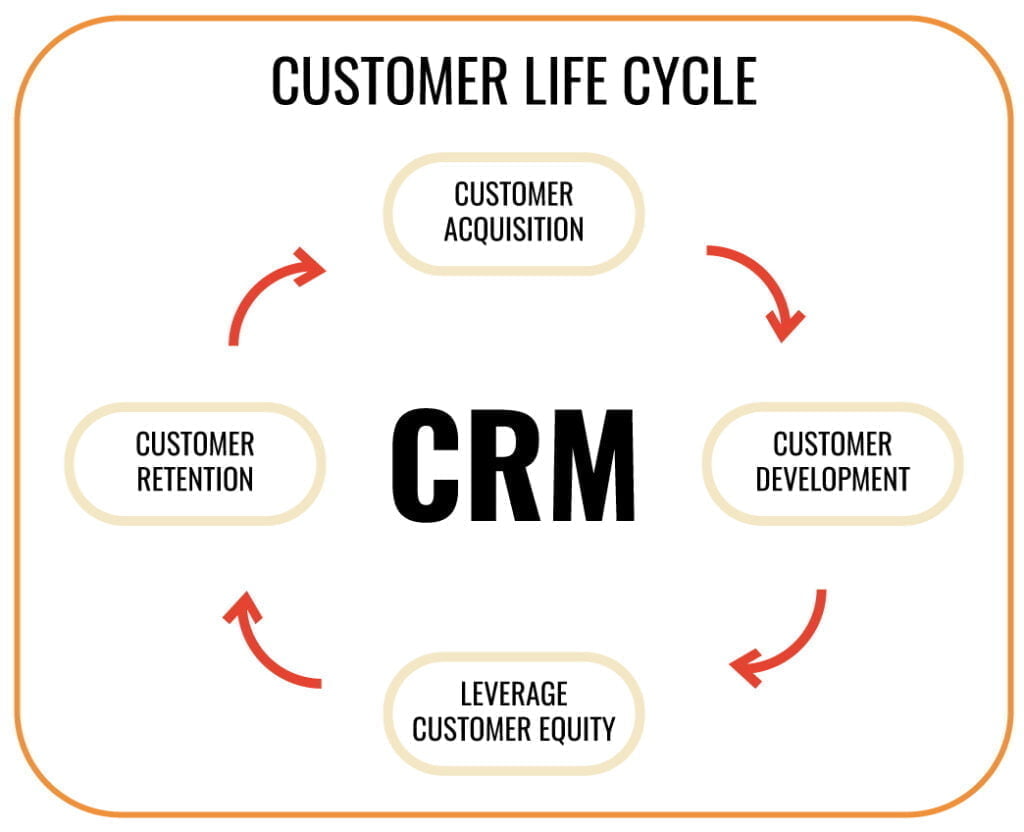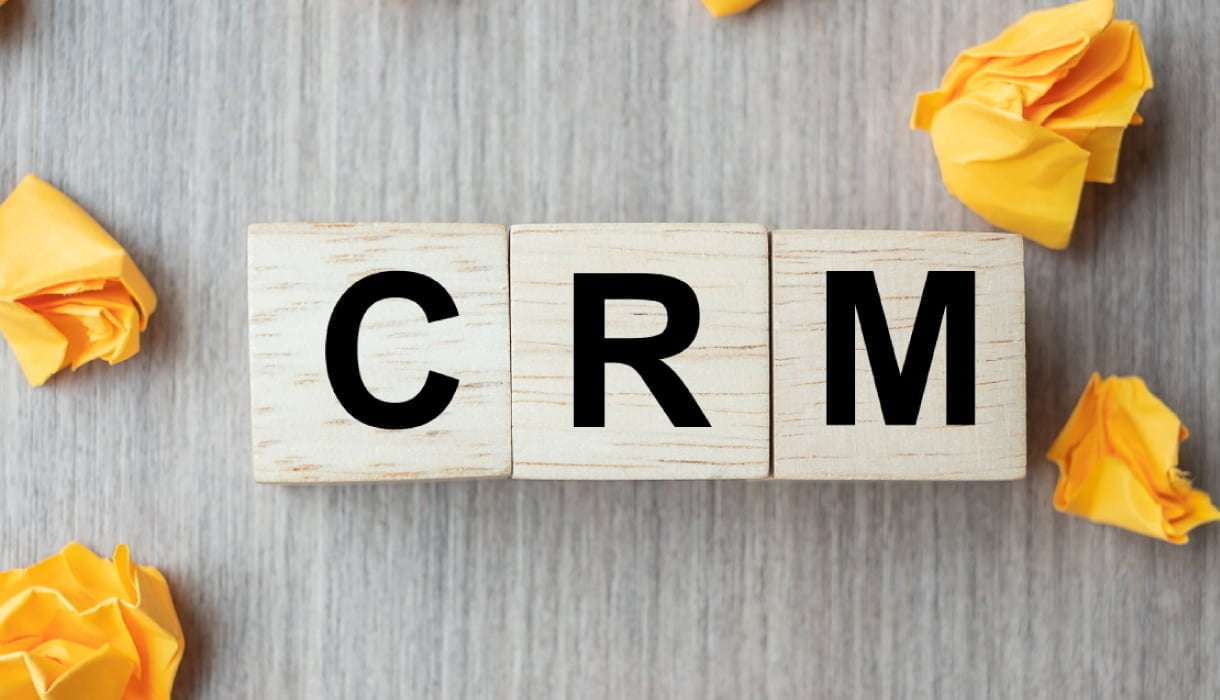CRM can be defined as building customer loyalty and profit-oriented steps by providing a personalized customer experience. CRM, which covers the entire life cycle of the customer, is basically a marketing strategy. Like other strategies, it’s a way of thinking and management aimed at creating brand value, increasing profits and building reputation. CRM, whose key point is the customer, carries out its marketing activities through the relationships established with the customers.
It is possible to say that CRM has existed since ancient times when trade started. Because if there is a customer, customer relationship or management is also mentioned. The concepts of buyer and seller, also indicate that the customer factor is present.
Simple trading elements varied over time, strengthening the relationship between customer and vendor, making it more personal and customized. Also, changing market factors have increased competition and companies have looked for different ways to be visible and preferred.
CRM and Customer
CRM, i.e. Customer Relationship Management is a systems aimed at improving the relationship between the company and the customer. Customer communication has become a necessity, a need, since communication between the first producer and the end consumer was lost. When you buy bread, you are not a customer of a wheat producer, a flour factory, or even a bakery. You just become the customer of the grocery/market where you buy the bread. When you have a complaint, you forward it to the market. Although the market is a seller for you, it is in the position of a customer for the bakery. The bakery is a seller for the market, a customer for the flour producer. And the flour producer is the customer of the wheat-producing farmer.
When talking about so many customers, even just for a product’s production network. For this reason, relationships with these customers must be managed accurately and actively. Correct and systematic transfer of feedback from customers enabled the development of the CRM system.
With the popularization of the internet, the concept of mass marketing has left its place to personal marketing. More customer-oriented management styles were determined and the need for CRM increased.
Customers with a large number of alternatives today are not shy about their demands. Therefore, experts who will understand the customer and produce solutions by convincing and listening to their problems are needed.
Marketing now stands out as relationship marketing that focuses on gaining the customer’s trust and has interaction options. Relationship marketing does not involve direct customer interaction. The brand must have sufficient equipment to establish a correct relationship with the customer.

CRM Elements
Customer
The customer is one of the parties to the commercial transaction. Changes in the markets from the past to the present have also caused great differences in customer behavior. In old markets, customers had a habit that had no alternative. Today, however, this habit has turned into habits that develop selection principles thanks to large markets and product diversity. Now customers evaluate alternatives, compare price-quality and provide feedback to get their money’s worth. For the manufacturer or seller, gaining the customer, retaining the customer and staying in interaction in the long term is very important.
Customer Experience
Customer experience is generally a customer’s interaction with the seller from the Lead stage to after the purchase. During this interaction, the ailments or satisfaction of the customer provides data for the customer experience graph. During the customer experience, the questions and problems of the customer should be resolved and continuity should be ensured.
Customer Loyalty
The relationship between the customer and seller is not just a commercial transaction. It is important to get the customers who choose your company to choose you again. It is an extension of the marketing strategy that your customers tell your brand to consumers like a representative. The customer’s acting as the representative of the brand explains the concept of “customer loyalty”. Special interactions prepared for loyal customers make the customer feel special and create an emotional bond with the brand.
Customer Interaction
A number of relationship processes develop between the seller and the buyer, and these processes are called customer interaction. These processes can continue in a long term, from pre-sales communication to after-sales feedback. Companies that make large commercial investments can take months or even years to purchase. The interaction that continues throughout this process is included in the responsibility of the brand. Communication processes that continue after sales play an important role in ensuring customer loyalty.
Customer Profile
A wide range of diversity can be mentioned in customer behavior alongside the variety of products in the market. Imagine two customers who want to buy the same product. One can choose a distant but old vendor while the other can choose a new but close one. Selection principles for customers in the target audience may differ. The brand should be based on different characteristics in terms of determining its target audience and appealing to its customers. The customer profile to be created for this purpose is an analysis method used to concretize the abstract customer target.
Customer Lifecycle
It is the cycle created as a result of determining the customer needs precisely. It starts with the potential customer and continues until the last stage where customer loyalty is achieved. The target audience is determined, potential customers, leads are determined and communication is established. When the customer acquisition process is completed, the post-sales interaction process begins. The higher the customer satisfaction, the higher the customer loyalty rate. When customer loyalty is achieved, the process is continued with loyal customers and the cycle starts to gain new customers. This unlimited cycle is like a summary of the customer lifecycle CRM system.

Basic Components
It is possible to experience customer migration at various stages throughout the cycle. Therefore, the customer interacted with will be different from the number of customers gained at the end of the cycle. This uncertain process increases the ability to measure in businesses with CRM systems. You must have a regular CRM system that you use. Thus, you can calculate what you will gain or lose as a result of reports and measurements.
– Value: It is the same basic quality as the “brand value” we mentioned as value. You need to create value for customers to choose you. You must-have features that will make your product or service different from your competitors. Price advantage can be product quality, accessibility or a personalized service concept. With this advantage, customers have a specific reason to choose your company. The main purpose of customer interaction proves that the customer’s choice of your company is the right decision. You should give your customer a journey that doesn’t disappoint and allows them to stand behind their decisions and suggest to their environment like a representative of your company.
– Segmentation: It can be defined as clustering customers according to certain criteria. The clusters created by considering many different criteria such as demographic characteristics, behavior patterns, needs, geographical locations, provide an easier understanding of the customer, speed up management and increase efficiency.
– Customer: It is basically the key point and the main component recommended for CRM. Keeping customer-focused processes such as managing customer information, directing customers, marketing and sales is an important step.
Why is CRM Necessary?
In line with the customer-oriented approach adopted in today’s marketing strategies, a personalized service understanding should be developed by establishing correct connections with customers. The statement “the customer is the heart of the business”, which is based on classical commercial values, is the same as the customer-oriented approach that is widespread today. No matter what service the business does, the resources of the business depend on a single unit, and this unit is the customer.
CRM strengthens a company’s ties with its customers, allowing the creation of a loyal customer profile that allows the company to improve. Today, the customer is not a passive buyer but an active creator of the product. It has a say in every step from the production stage to the post-purchase stages. So the mistreated customer responds in the same way. Customer complaints shared on social media explain exactly this situation. When the customer is treated badly by the brand, they cannot find an interlocutor and tries to attract attention by announcing their grievance on social media.
Well-established companies may be considered more attractive to customers due to their past success. However, this is not true according to today’s customer understanding. Past experiences do not qualify as indicative of future success. As the alternative increases, a customer base that questions, researches and objects more emerge.
CRM is a set of integrated technologies that collect information, make use of the collected information and create a customer portfolio. With CRM, while profitability and sales are increased, processes and tools that create value for the customer can also be controlled. It ensures that the best strategy is determined for customer-oriented processes such as better understanding customer needs and focusing on customer operations.
Benefits of CRM
Customer relationships play a crucial role in the success of a business. Understanding the psychology, behavior and habits of a company’s current or target customers is key to building good relationships with customers.
Customers have less loyalty and more alternatives than in the past. Since they are not helpless against the companies they have existing relationships with, customer behavior determines the terms of sale and service.
Companies have to retain their customers not only for today but also for a long process defined as “life-long”. With both innovations and increased service quality, the customer should be fed in every sense and the interaction should provide added value. CRM is not just a sales or technical issue. CRM is more than a technology or software application. It is a guide used in the process of achieving the determined company goals.
To be successful in customer relations, both management and sales departments must be equipped with up-to-date and accurate information. The information sent to the right people at the right time facilitates the achievement of the goals and increases efficiency. At the same time, it allows getting results in a shorter time by narrowing the sales cycle and evaluating the results obtained. Especially in processes such as expanding the loyal customer base, the most effective method is a correctly applied CRM process.
In addition to saving time and data, CRM also provides support in issues such as reducing the cost of sales, realizing the advantages and disadvantages, raising the customer service standard, getting more accurate results from reporting and analysis processes, affecting the productivity and efficiency of the entire system.
Thanks to CRM, there is no disconnector or intermediary between the customer and the company. A strong interaction is created by directly connecting the customer and the company. Thanks to customized models created for customers, the gap between solution providers and beneficiaries is eliminated.
Social and Cloud-Based CRM
With Social CRM, where social media tools are used to communicate with customers, a direct and effective communication link can be established with customers. Extensive reports are created by controlling the information both from customers and those sent to them. With a comprehensive CRM system such as HubSpot, the questions of how to respond to content that comes with a comprehensive CRM system, how to monitor responses and behaviors, and what image the brand should draw can be easily answered. Thanks to the feedback and direct communication functions provided by the CRM system used, it is ensured that the general marketing strategy is compatible with the general of the brand and trust is established.
Cloud systems, which have been applied in every field recently, are an integration model that makes the use of CRM easier and more accessible. Cloud systems go beyond the concepts of time and space and provide the most up-to-date and fastest information needed. It is especially important for companies that use CRM extensively. Cloud CRM allows very fast and easy data transfer as it integrates with other resources hosted in the cloud.
In short, CRM is a set of processes that include the efficiency provided to management, marketing and sales departments by combining customer-oriented strategies such as customer acquisition, ensuring customer retention, establishing correct communication with the customer. As a result of the analysis and planning made over customer needs and behaviors, CRM provides important opportunities to the holistic structure of the companies, and a fast, applicable and accurate management is realized.
